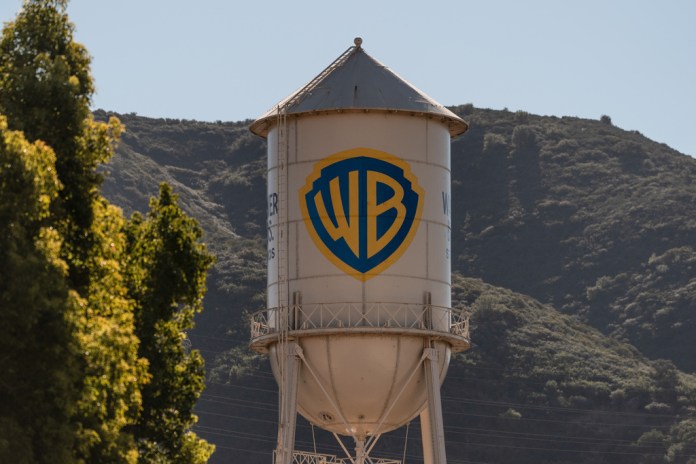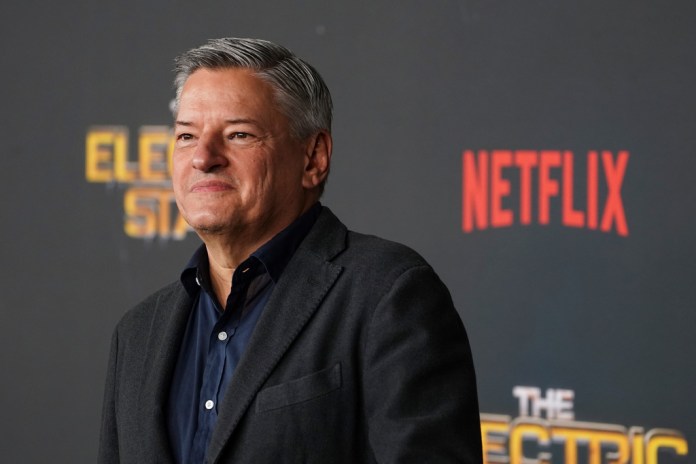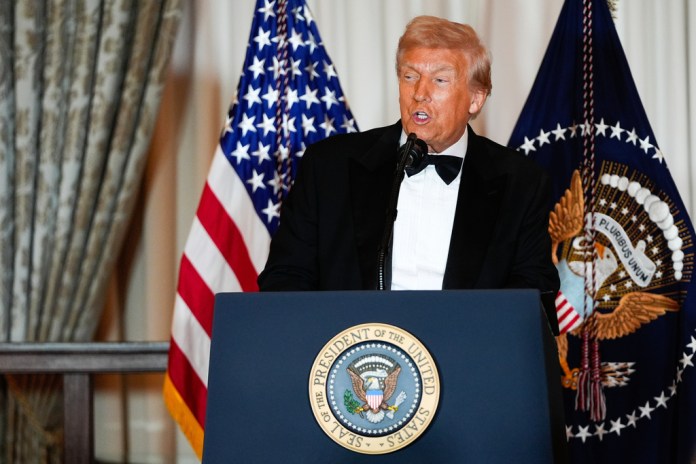Netflix’s Mr. McMahon reviewed: Professional wrestling is unsafe at any age – Washington Examiner
The Netflix docuseries *Mr. McMahon* explores the life and career of Vincent Kennedy McMahon, who transformed the World Wrestling Federation (WWF) into a global entertainment powerhouse. The six-episode series delves into McMahon’s business genius while also exposing the darker, often troubling culture of professional wrestling. From nostalgia-triggering anecdotes about wrestling legends like Cyndi Lauper and Hulk Hogan to the industry’s significant scandals, the series presents a comprehensive view of wrestling’s evolution from a regional spectacle to a multi-billion dollar business by the late 1980s.
The show skillfully combines the story of McMahon’s rise with shocking interviews revealing the industry’s abuses, particularly regarding women and the toxic culture that surrounded the wrestlers. Each episode navigates key events, such as Hogan’s controversial defection to rival WCW, which sparked the “Monday Night Wars,” a pivotal moment in wrestling history.
*Mr. McMahon* also educates viewers on wrestling terminology and the blurred lines between reality and performance in the sport, showcasing notable incidents and shifts in the industry. As the series progresses, it highlights a shift in WWE’s focus towards a more adult demographic, steering away from its family-friendly image. Ultimately, while the docuseries aims to evoke nostalgia and entertain, it also confronts the deeply ingrained issues within the sport, making it a compelling watch for both fans and newcomers alike.
Netflix’s Mr. McMahon reviewed: Professional wrestling is unsafe at any age
Watching Mr. McMahon, Netflix’s glossy new “sports entertainment” docuseries, the lapsed fan recalls all manner of wrastlin’ minutiae. Fresh off her best new artist win at the 1985 Grammys, Cyndi Lauper launched a brief second career as a World Wrestling Federation “manager” and mascot. WrestleMania II, a strange and unlovely affair, felt disjointed because it was broadcast from three separate venues: in Uniondale, New York; Rosemont, Illinois; and Los Angeles, California.
The question is whether the six-episode production achieves anything more significant than nostalgia. Its titular subject is, of course, one Vincent Kennedy McMahon, the second-generation wrestling impresario who transformed his father’s middling concern into the globe-straddling WWF, now World Wrestling Entertainment. In 1969, the McMahon enterprise was sleepy, regional, and bound by a gentlemen’s agreement not to poach talent from competitors. By 1987, the company was strong enough to fill Michigan’s Pontiac Silverdome with a paid attendance of more than 93,000.
In chronicling this evolution, Netflix’s series produces two incontrovertible facts. One: Vince McMahon in his prime was a business genius who could turn a lemonade stand into a Dow-listed megafirm. Two: The whole industry was, to put it lightly, a den of iniquity. “We abused the hell out of women,” WWE legend Tony Atlas tells the camera in one of many startling interviews. That the company’s men hardly fared better is a marker of just how depraved and depressing professional wrestling’s culture has long been.
Structurally, Mr. McMahon proceeds by weaving between these two extremes, often in the course of a single installment. In the first episode, director Chris Smith (American Movie) melds details of McMahon’s industry disruption with glimpses of early WWE scandals. (Example: The company lures Hulk Hogan from a rival promotion, and then the Hulkster chokes out talk show host Richard Belzer on live television.) The second episode looks at the enterprise’s explosive 1980s growth, as well as the sex and steroids scandals that revealed its gruesome underbelly. For WWE viewers of a certain age, the names thus evoked conjure awe: Jesse Ventura, Sgt. Slaughter, and Greg “The Hammer” Valentine. Yet even wrestling disparagers are likely to look on with something approaching wonder. McMahon took a ridiculous men-in-tights soap opera and made it into a multibillion-dollar behemoth. How could the story of that success fail to be interesting?
Though the series makes much of its protagonist’s family dynamics, the relationship at its heart may be that between McMahon and Hogan, an amateur bass guitarist-turned-world famous wrestling hero. So close was the two men’s bond that, when future Minnesota Gov. Ventura attempted to coax his peers into unionizing, Hogan ran to the boss to tattle. Called as a witness in McMahon’s 1994 steroids trial, Hogan assured the authorities that the WWE honcho had never pressured any wrestler to take drugs. Given this obvious affinity, it is something of a shock when, near the end of the show’s second hour, Hogan decamps for rival World Championship Wrestling, owned by business titan Ted Turner. The aftermath of that decision, covered in the series’s terrific third episode, saw the inauguration of the so-called Monday Night Wars, in which WWE’s storied Raw franchise went head-to-head with WCW’s competing, and frequently more entertaining, Nitro.
In covering these and other wrestling plot twists, Mr. McMahon takes care to bring the casual viewer along, defining the business’s sometimes arcane vocabulary words even as it drills into the core of industry operations. “Faces,” or good guys, and “heels,” or villains, get their due, but so, too, does “kayfabe,” a circus shorthand that stands, broadly, for a wrestler’s commitment to the “reality” of the bit. In an evolution that deserves to be studied in undergraduate History of Postmodernism classrooms, professional wrestling in the mid-’90s began blurring the line between fiction and real life, presenting, for example, Vince McMahon as “Mr. McMahon,” a rapacious executive who became, via staggeringly effective “promos” (in-character interviews), one of the finest heels in the history of the business.
Other kayfabe reversals will be familiar to fans already: the “Montreal Screwjob,” the “Curtain Call,” and the airing of McMahon family grievances on cable TV. Offspring Shane and Stephanie McMahon became regular characters in the WWE stable. Yet even for the uninitiated, the narrative and meta-narrative loops recalled on-screen really are fascinating. Argentina had its Jorge Luis Borges. America had its fin de siècle pro-wrestling storylines.
Things take a turn when, in the fourth episode, WWE drops all pretense of appealing to families and begins to gear its programs toward the coveted 18-to-34-year-old male demographic. What had once been a violent but essentially cartoonish wrestling product became overnight a crotch-grabbing, top-snatching fantasia of obscenity, misogyny, and gore. To be confronted, now, with the resulting “Attitude Era” is to yearn for the comparative decorum and respectability of a Tijuana brothel. I lived through those pro-wrestling years and occasionally watched, and even I, an unshockable TV critic, was horrified by what the producers managed to dredge up from the archives.
Did reality cross lines with fiction here as elsewhere? Given what we now know of WWE’s culture, the answer seems unquestionably to be “yes.” Since at least 1992, McMahon has fended off charges of sexual harassment and misconduct, a pattern that culminated in a January ’24 lawsuit by former employee Janel Grant. Accused now of “trafficking,” as well as sexual assault, McMahon is almost certainly finished as a pro-wrestling executive and icon. To be sure, the now-former WWE chairman deserves his day in court. Watching Netflix’s series, however, one is heavily inclined to believe the allegations against him.
And so Mr. McMahon concludes, with two final hours of mergers, resignations, triumphs, and defeats. I wouldn’t want to see the series again, but I grant that it has something compelling to say about American appetites and aversions. Only a great and terrible country could make a man like Vince McMahon rich. Indeed, professional wrestling itself lives inside that tension. I’m glad I once watched it. Just keep it the heck away from my children.
Graham Hillard is editor at the James G. Martin Center for Academic Renewal and a Washington Examiner magazine contributing writer.
" Conservative News Daily does not always share or support the views and opinions expressed here; they are just those of the writer."




